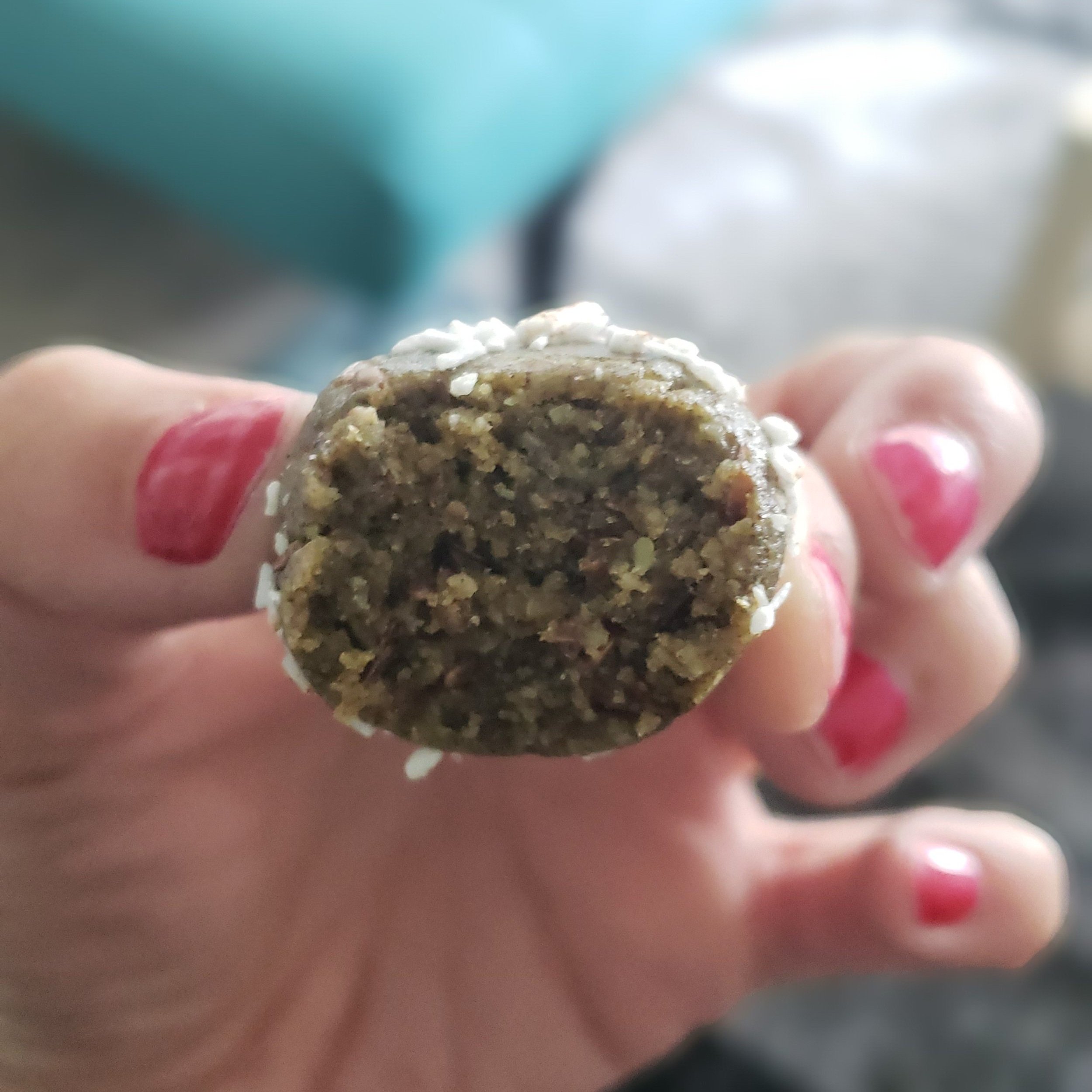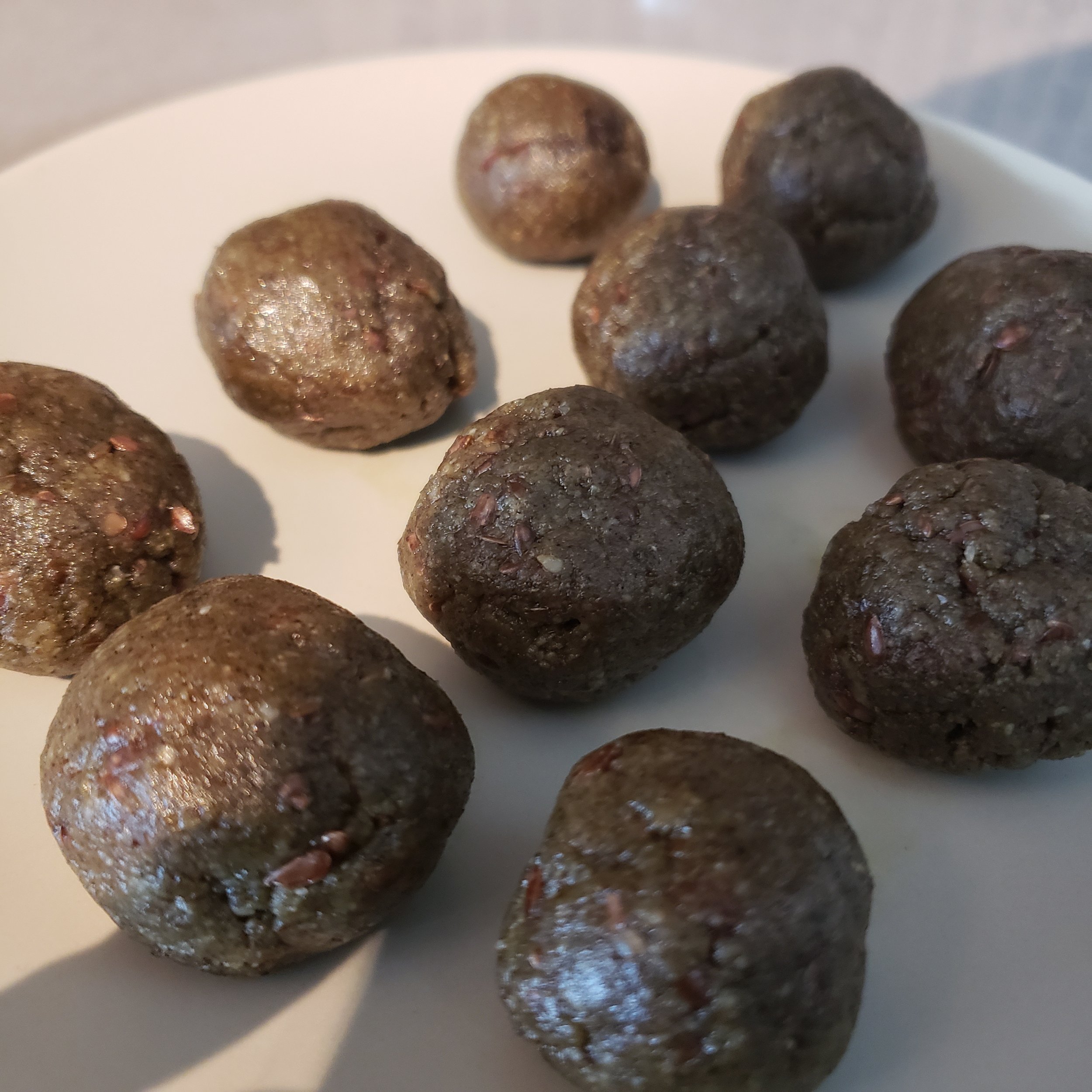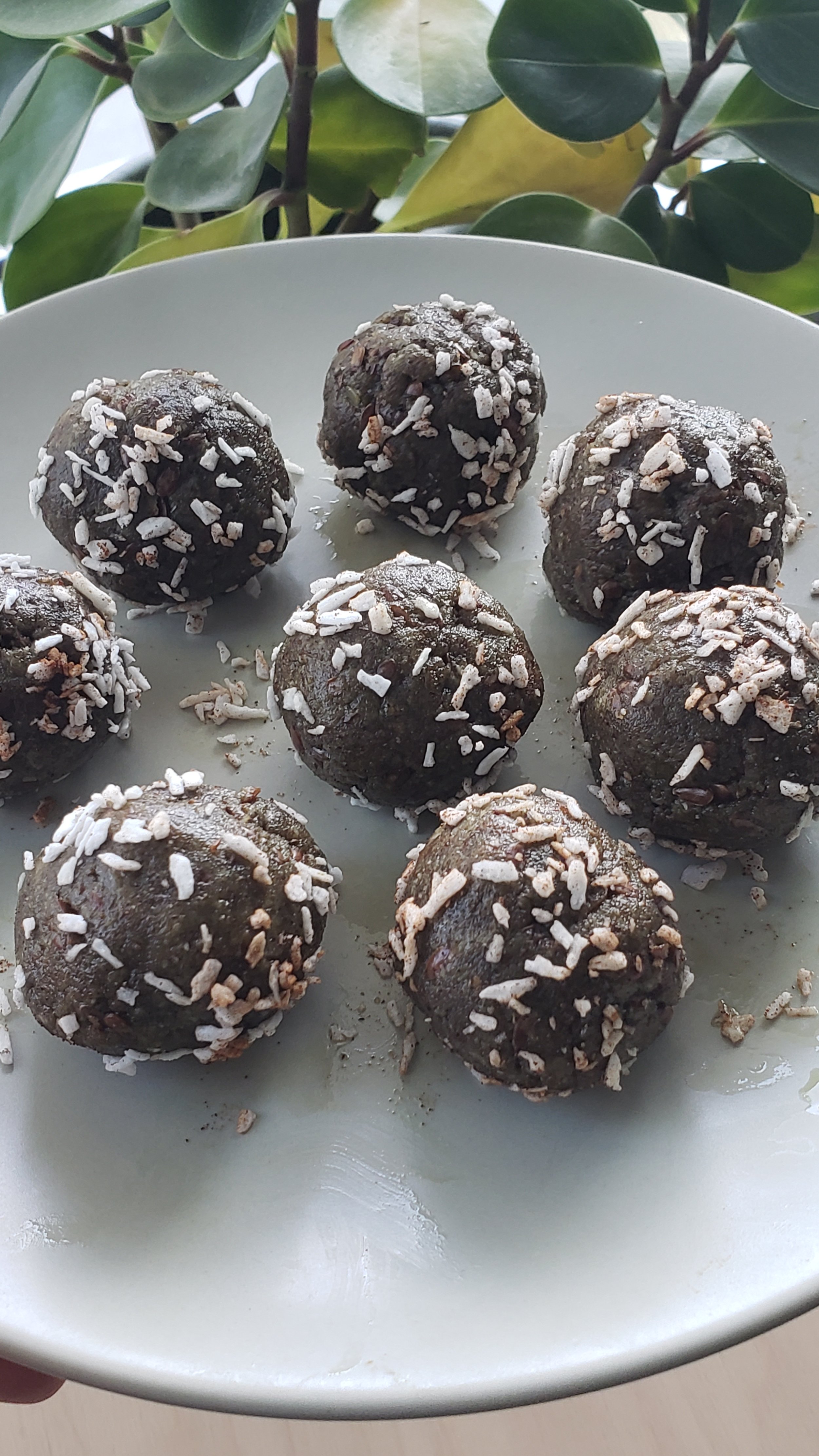Hemp Protein Balls
Let’s talk about PROTEIN! Protein is a macronutrient like carbohydrates and fat. For every gram of protein, you obtain 4kcal (Calories) which is the same as digestible carbohydrates (glucose) but the benefit of choosing more protein over carbohydrates is that when we consume protein, our gut breaks it down into amino acids which are absorbed into the body. Those amino acids are then used to make different proteins in our body - immune cells; Some hormones like thyroid hormone, growth hormone and insulin; muscles; melanin (our skin pigment); keratin (keeps our hair and nails firm); neurotransmitters like GABA, serotonin and dopamine; bone and skin tissue; our organs; and more.
While our brain needs glucose and our muscles need glucose for fuel during high intensity exercises, too many carbohydrates (glucose) can easily get stored as fat in the form of triglycerides if we aren’t engaging in enough physical activity. In fact, high triglycerides on a blood test can be better correlated with blood glucose levels and a marker for carbohydrate metabolism over lipid metabolism. If you are going to have carbohydrates, you want them to be complex carbs that take a longer time to digest or non-digestible carbs (fibre) such as non-starchy vegetables.
How much protein should you be getting? It varies between 0.7-1.1g per kg body weight with 1.1g being more for vegetarians and vegans since plant-based protein can be of lower quality with the exception of soy and quinoa (complete proteins). Protein requirements also differ for various health conditions such as those with decreased kidney function. The average adult should get about 0.8g per kg body weight in protein per day. Whatever your daily protein requirement is, it should be spread throughout the day and not eaten at only one meal as this enables optimal usage by muscles and less turned into fat.
Blood sugar crash? I often recommend protein and healthy fats added to meals if patients experience “post-meal fatigue” or get hungry every 2 hours as protein and healthy fats get digested slower allowing for more sustained energy. If you are looking for individual nutritional recommendations to help you with your energy levels or even what kind of protein options are good for you, you can book a 1:1 naturopathic consultation with me if you are located within Alberta.
How to up your protein intake? If you struggle to get enough protein, sometimes a protein powder added to smoothies, oatmeal, or energy balls can help get your protein requirements. If you dislike brown rice or pea protein powders, 𝗵𝗲𝗺𝗽 𝗽𝗿𝗼𝘁𝗲𝗶𝗻 can be a great option because it is a complete protein and contains omega 3 fats too.
I made these hemp protein balls using the Prairie Naturals French Vanilla Hemp protein powder which is made using organic and raw Canadian-grown hemp seeds, gluten-free, non-GMO, vegan, and has 5g of fibre per serving along with 14g of protein per serving (2 scoops). They are so delicious that I have to make them on repeat and are great for a pre- or post-workout or even an after dinner dessert as it contains lots of healthy fats and protein and sweetened by only natural sugar (maple syrup).
Hemp Protein Balls
Ingredients:
Makes 8-10 balls, each with about 6g of protein.
1/2 cup tahini
3 tbsp maple syrup
1/4 tsp almond extract
1 tsp vanilla extract
1/3 cup almond flour
1/4 cup ground flax
2 scoops @prairienaturals French Vanilla Hemp Protein Powder
Unsweetened coconut flakes for rolling
Method:
Mix the wet ingredients (tahini, maple syrup, and, almond and vanilla extracts) together in a mixing bowl.
Add the dry ingredients (almond flour, flax, and protein powder) to the wet ingredients and mix it into a dough. If it appears too wet, add an extra tablespoon or two of almond flour to absorb some of the liquid.
Roll them into 1 tbsp-sized balls. They will be soft.
Place them on a plate in the freezer to harden for 30 minutes.
Take them out and let them soften a little bit (2-3 minutes) then roll them into the unsweetened coconut flakes to coat the balls.
Place them back in the freezer for 30 minutes.
Store in an airtight container in the fridge and consume 1-2 balls at a time.




